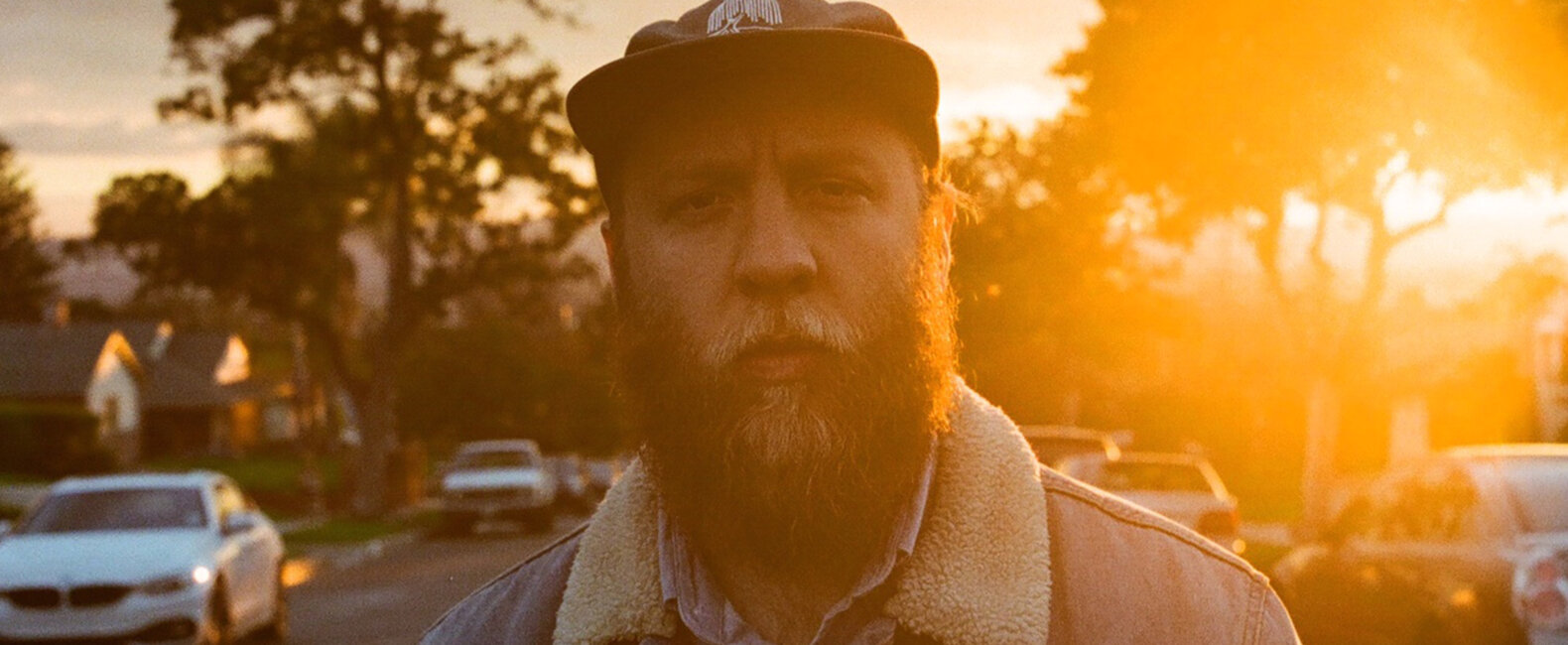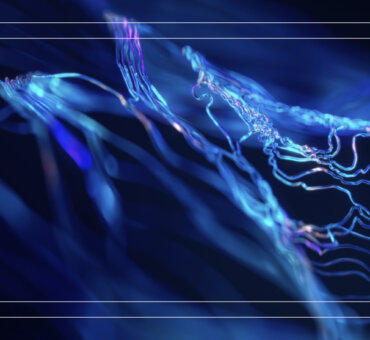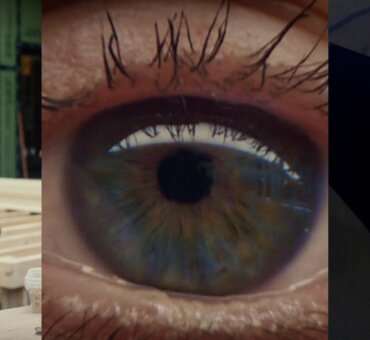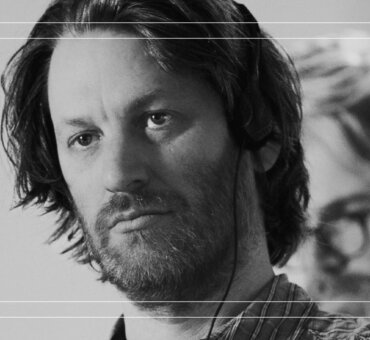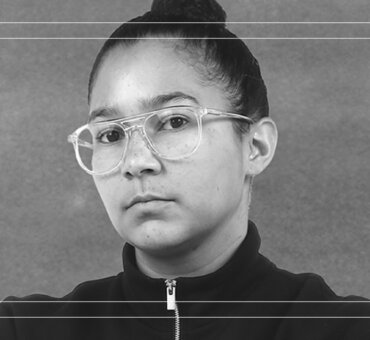These days it’s hard to find a creative person who doesn’t self-identify as a “storyteller,” a big catchall term that’s come to mean anything from writing a tagline for a soft drink to running your own personal Instagram. Brands now talk in terms of story. Pastors and life coaches talk in terms of story. It’s “story” everywhere you look. Or, to quote our friend Jared Hogan: “Story, story, story, story. To the point where it’s exhausting.” But there’s good news for the narratively fatigued: Story is not the be-all and end-all of creativity. Not nearly. A great example being — surprise! — our friend Jared. “I feel like I have to defend the fact that style and tone are really important to me,” he says. “I don’t think narrative storytelling is necessarily superior to them. They work in tandem, and it’s important to keep them in balance.”
We recently talked to Jared about storytelling, juxtaposition, and his latest project, We All Die.
What is your starting point when you come up with concepts? An image? A song?
It’s almost always a singular image. I was sent a track from Warner Brothers yesterday. I heard this song for the first time, and an image popped into my head. It’s both a blessing and a curse because it can be hard for me to shake that. Let’s say the image is something I can really build off of. That’s great. But if it’s something I don’t think I can develop further, it can become a creative roadblock. It’s hard to start over, to erase that image, whatever it may be. So, yeah, most of my ideas start with an image, but the process after that is kind of organic.
Why not be a photographer?
I’m fascinated with juxtaposition, the way images can clash against each other. I’m not chasing one iconic image, but rather the effect images have on one another. When you put them together, what do they say?
Did it take a long time to discover your interest in juxtaposition? Was it natural?
When I was in film school, I was certain I wanted to make documentaries. I applied for internships with The Maysles Brothers and Barbara Kopple’s company. When you look at where I am now, it’s pretty clear I had no idea what I’d become. Today, my work is music-video heavy, which is something I started doing maybe three years ago. So who knows? In a couple of years, I’ll probably look back at this interview and totally disagree with everything I said. It’s all a journey. I don’t have a particular style, but I am definitely hovering around a certain “thing” right now — a thing that will hopefully evolve.
Can you describe this “thing”? Is it related to the juxtaposition of elements?
Maybe. It’s funny that you asked me about photography because I’ve been developing some thoughts about that recently. I’m drawn to this idea of motion inside a frame while the frame itself is in motion. It’s a really addictive idea, and I’m trying to work through how I can do it and how that can translate to commercial work.
[nectar_single_testimonial testimonial_style=”bold” color=”Default” quote=”I’m not chasing one iconic image, but rather the effect images have on one another. When you put them together, what do they say?”]
How do you explain to your clients what you’re going for?
Well, obviously the idea needs to be in a form that I can share with other people. But getting there can be excruciating. I’d love it if I could just say, “Give me a camera and a little bit of money, and I’ll make something really amazing.” But it doesn’t usually work that way. So it’s a struggle. Sitting in my office trying to generate ideas is the antithesis of how my mind works. And it often leads to some extreme procrastination. My typical process is to put off coming up with an idea for six days, and then I finally force myself to do it in like 45 minutes. I’ve spent a lot of days and nights staring at a paragraph I’ve written and erased 10 times. Music videos can be especially hard because you’re trying to translate something sonic into something visual. But your canvas is totally blank. So it’s great that you have all that room to be creative, but sometimes it can be paralyzing. If you’re working creative for an agency, there are usually boards, ideas already on the table. That makes things a bit easier.
How do you move from an image in your head to a full concept? What’s your routine?
I wish I had one that works. I’m sitting at my desk right now — I wish you could see it — and I probably have 40 TextEdit documents open on my desktop. I’ve never been diagnosed with ADHD; but I saw an ad for it the other day, and I began to wonder. No, I don’t have a process. Unless you count getting distracted until I have no more time to be distracted.
Distract yourself into a corner, fight your way out.
Exactly. It’s like I have no other option but to do it. I’ll force myself to be an adult and take the notes I’ve been struggling to string together and find the idea.
What do those notes look like? Do you write scenes? A script? Or is it just stream of consciousness type stuff?
It depends. With commercials, the clients want things a certain way. I’m doing a spot right now for a National Hockey League team, and I wrote a four- or five-page script based on conversations and notes. That took me about 90 minutes. But it’s not how I typically work. A lot of my recent work has been music videos. For those, it’s way more stream of consciousness: playing the song over and over again, writing words as they come. Or taking notes on what I’m feeling. Sometimes shots come to me. Sometimes colors.[nectar_single_testimonial testimonial_style=”bold” color=”Default” quote=”‘Style and story are inseparable…’ They work in tandem, and it’s important to keep them in balance.”]
Where does story come into all of this? What’s your take on narrative and story structure?
That’s a very loaded question. I feel like there’s been this onslaught lately of story, story, story, story. To the point where it’s exhausting. I love stories. I love movies that take me somewhere and follow a classic narrative structure. But it’s also important to communicate ideas through images and how those images align with one another. What kinds of stories can they create? There’s a quote by Jean-Luc Godard — and I’m paraphrasing. He said something to the effect of “Style and story are inseparable, like the inside and outside of the human body; they can’t function apart from each other.” Maybe I feel like I have to defend the fact that style and tone are really important to me. I don’t think narrative storytelling is necessarily superior to them. They work in tandem, and it’s important to keep them in balance.
Can you think of a time when you took a big creative risk, something that pushed you out of your comfort zone?
The last personal short film I made. I’ve done a handful of them for clients, but the last one I made for myself was a real test. I tried to get collaborators to write with me for like a year and a half or two. It got to the point where I realized I was never going to make it if I waited for a script to emerge. So I shot without a script. And I’d be lying if I said it was totally successful, that it was the film I wanted. But I did it. And I’m mostly happy with it.
For some other projects — for instance, the video we did with Rome Fortune — I made a leap of faith. I’d never met Rome in person. I literally walked up to his apartment in L.A.’s Koreatown with a camera and two of my buddies, knocked on his door, and then followed him around. In a way, it was a return to my interest in documentaries — the way you need to react to things as they happen. That can be pretty risky, but it can also be really rewarding.
Let’s talk about We All Die. Was there an initial image or concept you had in your head for that project?
Rome and I had wanted to do a music video forever, but it wasn’t coming together. Then I happened to be in L.A. for some meetings, and I decided to save a day and see if we could come up with something. We’d discussed shooting a documentary because his personal story is unique. He’s an Atlanta rapper who’s moved around a bit, and he was trying to redefine himself as an artist and a father. He was consciously trying to avoid the clichés of what a rapper does, what a rapper wears, what a rapper writes about. So I thought it would be interesting to just follow him throughout his day and capture his thoughts on being a musician, being an artist, and being a dad. I told him I wanted it to be a journey into his brain, a look into his subconscious and why he makes the decisions he makes. That’s pretty much how it came together: exploring where Rome was, where he wanted to go, and what obstacles stood in his way.
How did you capture his daily thoughts? Did you give him a recorder to walk around with? Or did he write stuff down?
Originally, I was going to do an interview, but it wasn’t working out for either of us timewise. And then I was going to get him to walk around with a recorder, kind of like, “I’m in the grocery store with my iPhone recording.” That was the original concept. But eventually, I ended up sending him questions that he’d answer from time to time, like whenever he was in the studio. I then took that collection of thoughts and layered in some surrealistic imagery of him working in his space.
You’re often working on a lot of projects at once. Does that work well for you?
It works okay for me. I’m sure there’s some productivity guru who could give you a better answer. Some people have their process dialed in. I mostly feel like I’m doggy paddling in the deep end, just trying to give the appearance that things are all buttoned up, even when it’s mostly a scramble. I don’t get stressed super easily. I mean, money sometimes stresses me out. Going over budget. But when I’m on set, I truly enjoy myself. It’s almost peaceful.
